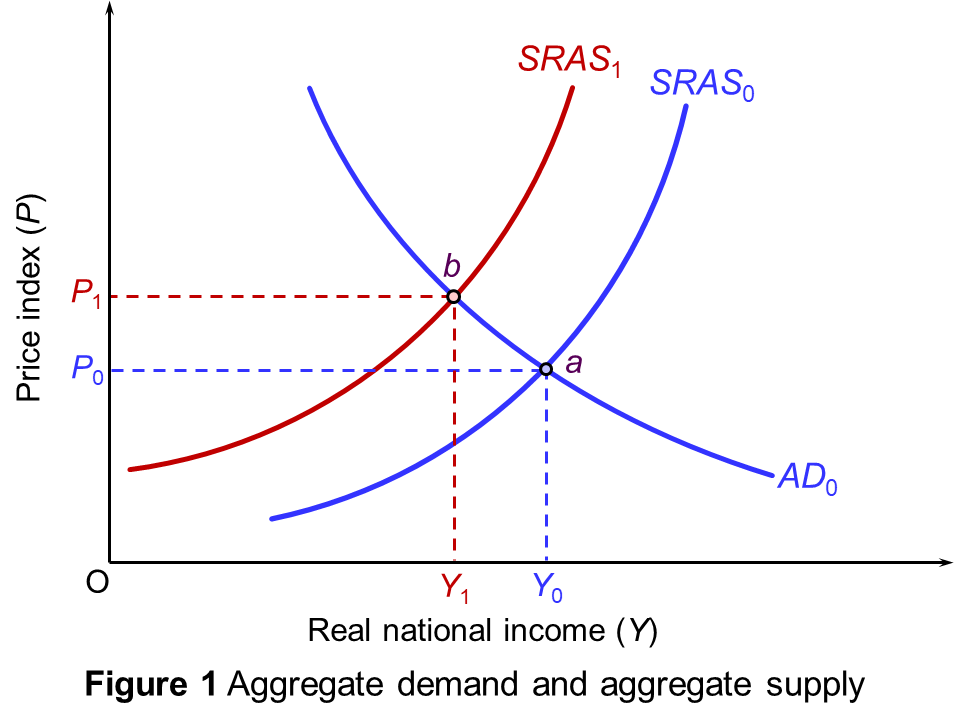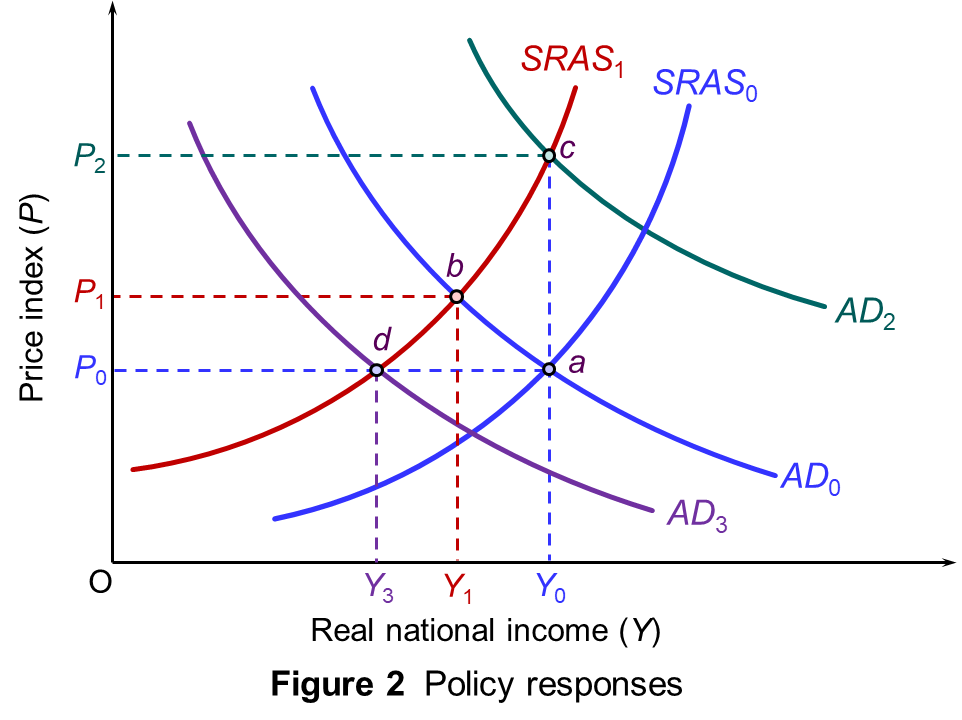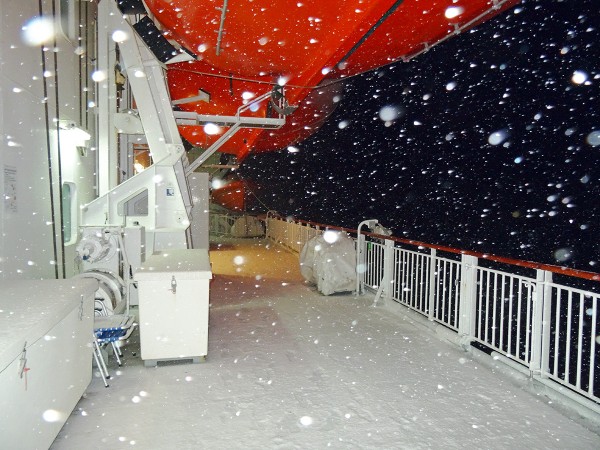 The suffering inflicted on the Ukrainian people by the Russian invasion is immense. But, at a much lower level, the war will also inflict costs on people in countries around the world. There will be significant costs to households in the form of even higher energy and food price inflation and a possible economic slowdown. The reactions of governments and central banks could put a further squeeze on living standards. Stock markets could fall further and investment could decline as firms lose confidence.
The suffering inflicted on the Ukrainian people by the Russian invasion is immense. But, at a much lower level, the war will also inflict costs on people in countries around the world. There will be significant costs to households in the form of even higher energy and food price inflation and a possible economic slowdown. The reactions of governments and central banks could put a further squeeze on living standards. Stock markets could fall further and investment could decline as firms lose confidence.
Russia is the world’s second largest oil supplier and any disruption to supplies will drive up the price of oil significantly. Ahead of the invasion, oil prices were rising. At the beginning of February, Brent crude was around $90 per barrel. With the invasion, it rose above $100 per barrel.
 Russia is also a major producer of natural gas. The EU is particularly dependent on Russia, which supplies 40% of its natural gas. With Germany halting approval of the major new gas pipeline under the Baltic from Russia to Germany, Nord Stream 2, the price of gas has rocketed. On the day of the invasion, European gas prices rose by over 50%.
Russia is also a major producer of natural gas. The EU is particularly dependent on Russia, which supplies 40% of its natural gas. With Germany halting approval of the major new gas pipeline under the Baltic from Russia to Germany, Nord Stream 2, the price of gas has rocketed. On the day of the invasion, European gas prices rose by over 50%.
Nevertheless, with the USA deciding not to extend sanctions to Russia’s energy sector, the price of gas fell back by 32% the next day. It remains to be seen just how much the supplies of oil and gas from Russia will be disrupted over the coming weeks.
Both Russia and Ukraine are major suppliers of wheat and maize, between them responsible for 14% of global wheat production and 30% of global wheat exports. A significant rise in the price of wheat and other grains will exacerbate the current rise in food price inflation.
Russia is also a significant supplier of metals, such as copper, platinum, aluminium and nickel, which are used in a wide variety of products. A rise in their price has begun and will further add to inflationary pressures and supply-chain problems which have followed the pandemic.
 The effect of these supply shocks can be illustrated in a simple aggregate demand and supply diagram (see Figure 1), which shows a representative economy that imports energy, grain and other resources. Aggregate demand and short-run aggregate supply are initially given by AD0 and SRAS0. Equilibrium is at point a, with real national income (real GDP) of Y0 and a price index of P0.
The effect of these supply shocks can be illustrated in a simple aggregate demand and supply diagram (see Figure 1), which shows a representative economy that imports energy, grain and other resources. Aggregate demand and short-run aggregate supply are initially given by AD0 and SRAS0. Equilibrium is at point a, with real national income (real GDP) of Y0 and a price index of P0.
The supply shock shifts short-run aggregate supply to SRAS1. Equilibrium moves to point b. The price index rises to P1 and real national income falls to Y1. If it is a ‘one-off’ cost increase, then the price index will settle at the new higher level and GDP at the new lower level provided that real aggregate demand remains the same. Inflation will be temporary. If, however, the SRAS curve continues to shift upwards to the left, then cost-push inflation will continue.
These supply-side shocks make the resulting inflation hard for policymakers to deal with. When the problem lies on the demand side, where the inflation is accompanied by an unsustainable boom, a contractionary fiscal and monetary policy can stabilise the economy and reduce inflation. But the inflationary problem today is not demand-pull inflation; it’s cost-push inflation. Disruptions to supply are both driving up prices and causing an economic slowdown – a situation of ‘stagflation’, or even an inflationary recession.
 An expansionary policy, such as increasing bond purchases (quantitative easing) or increasing government spending, may help to avoid recession (at least temporarily), but will only exacerbate inflation. In Figure 2, aggregate demand shifts to AD2. Equilibrium moves to point c. Real GDP returns to Y0 (at least temporarily) but the price level rises further, to P2. (Click here for a PowerPoint of the diagram.)
An expansionary policy, such as increasing bond purchases (quantitative easing) or increasing government spending, may help to avoid recession (at least temporarily), but will only exacerbate inflation. In Figure 2, aggregate demand shifts to AD2. Equilibrium moves to point c. Real GDP returns to Y0 (at least temporarily) but the price level rises further, to P2. (Click here for a PowerPoint of the diagram.)
A contractionary policy, such as raising interest rates or taxes, may help to reduce inflation but will make the slowdown worse and could lead to recession. In the diagram, aggregate demand shifts to AD3. Equilibrium moves to point d. The price level returns to P0 (at least temporarily) but real income falls further, to Y3.
In other words, you cannot tackle both the slowdown/recession and the inflation simultaneously by the use of demand-side policy. One requires an expansionary fiscal and/or monetary policy; the other requires fiscal and/or monetary tightening.
Then there are other likely economic stresses. If NATO countries respond by increasing defence expenditure, this will put further strain on public finances.
Sentiment is a key driver of the economy and prices. Expectations tend to be self-fulfilling. So if the war in Ukraine undermines confidence in stock markets and the real economy and further raises inflationary expectations, this pessimistic mood will tend in itself to drive down share prices, drive up inflation and drive down investment and economic growth.
Articles
- How will Russia’s invasion of Ukraine hit the global economy?
Financial Times, Chris Giles, Jonathan Wheatley and Valentina Romei (25/2/22)
- Ukraine conflict raises the possibility of stagflation
Financial Times, The Editorial Board (25/2/22)
- Five ways the Ukraine war could push up prices
BBC News, Laura Jones (5/3/22)
- Jason Furman cautions against reading too much into the initial market reactions to Russia’s invasion
interest.co.nz, Jason Furman (26/2/22)
- Putin’s war promises to crush the global economy with inflation and much slower growth
Market Watch, Nouriel Roubini (25/2/22)
- Roubini: 6 Financial, Economic Risks of Russia-Ukraine War
ThinkAdvisor, Janet Levaux (25/2/22)
- Fed tightening plans now contending with war, possible oil shock
Reuters, Howard Schneider and Jonnelle Marte (24/2/22)
- The invasion of Ukraine changed everything for Wall Street
CNN, Julia Horowitz (27/2/22)
- Why the Russian invasion will have huge economic consequences for American families
CNN, Matt Egan (24/2/22)
- European gas prices soar and oil tops $105 after Russia attacks Ukraine
Financial Times, Neil Hume, Emiko Terazono and Tom Wilson (24/2/22)
- Five essential commodities that will be hit by war in Ukraine
The Conversation, Sarah Schiffling and Nikolaos Valantasis Kanellos (24/2/22)
- Ukraine: ‘I’m surprised the oil price hasn’t hit US$130 a barrel yet’ – energy trading expert Q&A
The Conversation, Adi Imsirovic (25/2/22)
- Ukraine crisis: Warning UK energy bills could top £3,000 a year
BBC News, Michael Race (25/2/22)
- Putin’s energy shock: The economic realities of invasion
BBC News, Faisal Islam (25/2/22)
- Fears of UK food and fuel prices rising due to war
BBC News, Oliver Smith & Michael Race (26/2/22)
- Ukraine conflict: What is Swift and why is banning Russia so significant?
BBC News, Russell Hotten (27/2/22)
- Ukraine conflict: How reliant is Europe on Russia for oil and gas?
BBC News, Jake Horton & Daniele Palumbo (25/2/22)
- Ukraine crisis complicates ECB’s path to higher rates
Reuters, Francesco Canepa and Balazs Koranyi (24/2/22)
- Russia and the West are moving towards all out economic war
Al Jazeera, Maximilian Hess (24/2/22)
Questions
- If there is a negative supply shock, what will determine the size of the resulting increase in the price level and the rate of inflation over the next one or two years?
- How may expectations affect (a) the size of the increase in the price level; (b) future prices of gas and oil?
- Why did stock markets rise on the day after the invasion of Ukraine?
- Argue the case for and against relaxing monetary policy and delaying tax rises in the light of the economic consequences of the war in Ukraine.
 With many countries experiencing low growth some 12 years after the financial crisis and with new worries about the effects of the coronavirus on output in China and other countries, some are turning to a Keynesian fiscal stimulus (see Case Study 16.6 on the student website). This may be in the form of tax cuts, or increased government expenditure or a combination of the two. The stimulus would be financed by increased government borrowing (or a reduced surplus).
With many countries experiencing low growth some 12 years after the financial crisis and with new worries about the effects of the coronavirus on output in China and other countries, some are turning to a Keynesian fiscal stimulus (see Case Study 16.6 on the student website). This may be in the form of tax cuts, or increased government expenditure or a combination of the two. The stimulus would be financed by increased government borrowing (or a reduced surplus).
The hope is that there will also be a longer-term supply-side effect which will boost potential national income. This could be through tax reductions creating incentives to invest or work more efficiently; or it could be through increased capacity from infrastructure spending, whether on transport, energy, telecommunications, health or education.
In the UK, the former Chancellor, Sajid Javid, had adopted a fiscal rule similar to the Golden Rule adopted by the Labour government from 1997 to 2008. This stated that, over the course of the business cycle, the government should borrow only to invest and not to fund current expenditure. Javid’s rule was that the government would balance its current budget by the middle of this Parliament (i.e. in 2 to 3 years) but that it could borrow to invest, provided that this did not exceed 3% of GDP. Previously this limit had been set at 2% of GDP by the former Chancellor, Philip Hammond. Using his new rule, it was expected that Sajid Javid would increase infrastructure spending by some £20 billion per year. This would still be well below the extra promised by the Labour Party if they had won the election and below what many believe Boris Johnson Would like.
 Sajid Javid resigned at the time of the recent Cabinet reshuffle, citing the reason that he would have been required to sack all his advisors and use the advisors from the Prime Minister’s office. His successor, the former Chief Secretary to the Treasury, Rishi Sunak, is expected to adopt a looser fiscal rule in his Budget on March 11. This would result in bigger infrastructure spending and possibly some significant tax cuts, such as a large increase in the threshold for the 40% income tax rate.
Sajid Javid resigned at the time of the recent Cabinet reshuffle, citing the reason that he would have been required to sack all his advisors and use the advisors from the Prime Minister’s office. His successor, the former Chief Secretary to the Treasury, Rishi Sunak, is expected to adopt a looser fiscal rule in his Budget on March 11. This would result in bigger infrastructure spending and possibly some significant tax cuts, such as a large increase in the threshold for the 40% income tax rate.
A Keynesian stimulus would almost certainly increase the short-term economic growth rate as inflation is low. However, unemployment is also low, meaning that there is little slack in the labour market, and also the output gap is estimated to be positive (albeit only around 0.2%), meaning that national income is already slightly above the potential level.
 Whether a fiscal stimulus can increase long-term growth depends on whether it can increase capacity. The government hopes that infrastructure expenditure will do just that. However, there is a long time lag between committing the expenditure and the extra capacity coming on stream. For example, planning for HS2 began in 2009. Phase 1 from London to Birmingham is currently expected to be operation not until 2033 and Phase 2, to Leeds and Manchester, not until 2040, assuming no further delays.
Whether a fiscal stimulus can increase long-term growth depends on whether it can increase capacity. The government hopes that infrastructure expenditure will do just that. However, there is a long time lag between committing the expenditure and the extra capacity coming on stream. For example, planning for HS2 began in 2009. Phase 1 from London to Birmingham is currently expected to be operation not until 2033 and Phase 2, to Leeds and Manchester, not until 2040, assuming no further delays.
Crossrail (the new Elizabeth line in London) has been delayed several times. Approved in 2007, with construction beginning in 2009, it was originally scheduled to open in December 2018. It is now expected to be towards the end of 2021 before it does finally open. Its cost has increased from £14.8 billion to £18.25 billion.
Of course, some infrastructure projects are much quicker, such as opening new bus routes, but most do take several years.
The first five articles look at UK policy. The rest look at Keynesian fiscal policies in other countries, including the EU, Russia, Malaysia, Singapore and the USA. Governments seem to be looking for a short-term boost to aggregate demand that will increase short-term GDP, but also have longer-term supply-side effects that will increase the growth in potential GDP.
Articles
Questions
- Illustrate the effect of an expansionary fiscal policy with a Keynesian Cross (income and expenditure) diagram or an injections and withdrawals diagram.
- What is meant by the term ‘output gap’? What are the implications of a positive output gap for expansionary Keynesian policy?
- Assess the benefits of having a fiscal rule that requires governments to balance the current budget but allows borrowing to invest.
- Would there be a problem following such a rule if there is currently quite a large positive output gap?
- To what extent are the policies being proposed in Russia, the EU, Malaysia and Singapore short-term demand management policies or long-term supply-side policies?
 Let’s say that the world slides back into recession, or at least, the eurozone, the USA and other major economies. This is not unthinkable, given the determination of many countries to reduce public-sector deficits and debt, concerns about slowing growth in China and other major developing countries, and worries about various geo-political developments, such as conflict in the Middle East and the possible exit of Greece from the euro and the shock waves this might send. If it happened, what could governments and central banks do to stimulate aggregate demand? The problem is, according to the linked articles below, the world has largely run out of policy instruments.
Let’s say that the world slides back into recession, or at least, the eurozone, the USA and other major economies. This is not unthinkable, given the determination of many countries to reduce public-sector deficits and debt, concerns about slowing growth in China and other major developing countries, and worries about various geo-political developments, such as conflict in the Middle East and the possible exit of Greece from the euro and the shock waves this might send. If it happened, what could governments and central banks do to stimulate aggregate demand? The problem is, according to the linked articles below, the world has largely run out of policy instruments.
In normal times, the main policy instruments for stimulating aggregate demand are cuts in interest rates (monetary policy) and increases in government expenditure and/or tax cuts (fiscal policy). But with interest rates currently at virtually zero, there is little scope for further cuts. And with governments attempting to ‘repair’ their balance sheets by cutting deficits, there is little appetite for increasing deficits again.
 It is possible that central banks could engage in further quantitative easing. Indeed, the ECB is only just starting its large QE programme, involving monthly bond purchases of €60bn until at least September 2016 (totalling €1.14tr at that point). But QE leads to market distortions, such as increased asset prices (e.g. share and house prices), made higher and more unstable by speculation. By providing ‘cheap money’, it also encourages potentially risky investments.
It is possible that central banks could engage in further quantitative easing. Indeed, the ECB is only just starting its large QE programme, involving monthly bond purchases of €60bn until at least September 2016 (totalling €1.14tr at that point). But QE leads to market distortions, such as increased asset prices (e.g. share and house prices), made higher and more unstable by speculation. By providing ‘cheap money’, it also encourages potentially risky investments.
The articles below considers the dilemma and looks at six possible options for policy makers suggested by Stephen King, chief economist at HSBC. But are they realistic? Read the articles and then consider the questions.
Financial crisis fixes leave policymakers short of ammo for next recession The Guardian, Larry Elliott (31/5/15)
How to get the economy working for us Guardian Letters, Mary Mellor; Colin Hines; Martin London; William Dixon and David Wilson (2/6/15)
HSBC’s Stephen King Outlines “Economic Nightmare” ValueWalk (14/5/15)
HSBC: Central Banks Are Running Low on Ammunition Bloomberg, Julie Verhage (13/5/15)
If the US economy is signalling an iceberg, bad news: we’re out of lifeboats The Guardian, Nils Pratley (13/5/15)
Policy makers lack the firepower to fight another US recession Financial Times, Stephen King (18/5/15)
 The new surrealism Global Economics Quarterly, Stephen King (Q2, 2015)
The new surrealism Global Economics Quarterly, Stephen King (Q2, 2015)
Questions
- What are the risks to global recovery?
- Why has recovery from the 2008/9 recession been slower than that from previous recessions?
- What are the traditional instruments for combatting a recession?
- Why might central banks be wary of engaging in further rounds of quantitative easing?
- What is meant by ‘helicopter money’? Would this be a better solution to a recession than quantitative easing?
- Go through the other five policy options identified by Stephen King and discuss the suitability of each one.
The US economic recovery is slowing. As consumer and business confidence wanes, so there is growing talk of a double-dip recession. So what’s to be done about it? How can aggregate demand be boosted without spooking the markets?
One solution would be for a further fiscal stimulus. The one instituted in January 2009 in the depth of the recession has virtually worked itself out, with many short-term projects financed by the stimulus having come to an end. But any further stimulus would cause further worries about America’s balooning public-sector deficit, which already is predicted to be some 10.6% for 2010 (up from 1.1% in 2007).
The alternative is to use monetary policy. But, with the Federal Reserve rate already at between 0% and 0.25% (where it has been since the end of 2008), there is no scope for further cuts in interest rates. If monetary policy is to be used to give an additional boost to the economy, then further quantitiative easing is necessary. This is what the Federal Reserve decided to do on 10 August. As the Independent (see link below) states:
The US Federal Reserve decided last night to extend its $1.55 trillion programme of quantitative easing in an attempt to rejuvenate an economic recovery that the central bank admitted was turning out “more modest” than it expected.
The interest rate-setting Federal Open Market Committee bowed to calls from across the financial markets to extend its support, saying it would pump new money into the markets at a rate equivalent to about $200bn a year, and it left the duration of its efforts open-ended.
So how successful is this policy likely to be? The following articles look at the issues.
Articles
‘Light’ quantitative easing for slow US economic recovery New Statesman (11/8/10)
Fed sets the printing press rolling again to juice recovery Independent, Stephen Foley (11/8/10)
US Federal Reserve reveals plan to buy government debt Herald Scotland, Douglas Hamilton (11/8/10)
Some questions and answers on the Fed`s new policy Money Control (11/8/10)
Fed downgrades recovery outlook Financial Times, James Politi and Michael Mackenzie (10/8/10)
Fed acts as US recovery loses steam ABC News, Peter Ryan (11/8/10)
Top Fed Official, Warns Fed Risks Repeating Past Mistakes Huffington Post, Thomas Hoenig (11/8/10)
Austerity or stimulus? Some economists ha
The Fed must address Main Street’s credit crunch The Economist, Guillermo Calvo (15/8/10)
The Fed has options to lower real interest rates The Economist, Mark Thoma (15/8/10)
Fear of renewed recession in America is overblown; so is some of the optimism in the euro area The Economist (12/8/10)
Analysts’ view: Economists divided on effectiveness of Fed move Reuters (11/8/10)
If the Fed’s going to monetise debt, now’s the time to do it The Economist, Laurence Kotlikoff (13/8/10)
A former Fed official offers advice to Ben Bernanke The Economist, Joseph Gagnon (17/8/10)
America’s century is over, but it will fight on Guardian, Larry Elliott (23/8/10)
Federal Reserve documents
Press Release on monetary policy Federal Reserve (10/8/10)
Information on Federal Open Market Committee Federal Reserve
Questions
- What are are the arguments for using quantitative easing?
- Explain the process by which quantitative easing increases (a) narrow money and (b) broad money.
- How has the US and global economic situation changed since June 2010?
- Could the Fed’s policy be described as one of quantitative easing or merely one of maintaining the existing quantity of money? Explain.
- What are dangers in pursuing a policy of quantitative easing?
- What are the arguments for pursuing tight fiscal policy at the same time as loose monetary policy?
- Why does Thomas Hoenig claim that the Fed risks repeating past mistakes?
- How could the real rate of interest be reduced if the nominal rate is virtually zero and cannot be negative?
- Explain what is meant by ‘seigniorage’ (see the final The Economist article above).
According to political business cycle theory, incoming governments tend to take harsh measures at first, when they can blame the cuts on the ‘mess they’ve inherited’ from their predecessors. And then two or three years later, as an election looms, they can start spending more and/or cutting taxes, hoping that the good will this creates will help them win the election.
So are we seeing the start of a new political business cycle with the start of the new Coalition government? The following two articles look at the issue.
Coalition will inflict cuts now and spend later to win a second term Guardian, Larry Elliott (17/5/10)
If you get all the bad news out at once, the only way left to go will be up. Or will it? Independent, Sean O’Grady (18/5/10)
Questions
- Explain what is meant by the ‘political business cycle’.
- Would the existence of a political dimension to the business cycle amplify or dampen the cycle, or could it do either depending on the circumstances? Explain.
- Does the existence of an independent central bank eliminate the political business cycle?
- Will the new Office for Budget Responsibility (see Nipping it in the Budd: Enhancing fiscal credibility?) help to eliminate the political business cycle? Explain your answer.
 The suffering inflicted on the Ukrainian people by the Russian invasion is immense. But, at a much lower level, the war will also inflict costs on people in countries around the world. There will be significant costs to households in the form of even higher energy and food price inflation and a possible economic slowdown. The reactions of governments and central banks could put a further squeeze on living standards. Stock markets could fall further and investment could decline as firms lose confidence.
The suffering inflicted on the Ukrainian people by the Russian invasion is immense. But, at a much lower level, the war will also inflict costs on people in countries around the world. There will be significant costs to households in the form of even higher energy and food price inflation and a possible economic slowdown. The reactions of governments and central banks could put a further squeeze on living standards. Stock markets could fall further and investment could decline as firms lose confidence. Russia is also a major producer of natural gas. The EU is particularly dependent on Russia, which supplies 40% of its natural gas. With Germany halting approval of the major new gas pipeline under the Baltic from Russia to Germany, Nord Stream 2, the price of gas has rocketed. On the day of the invasion, European gas prices rose by over 50%.
Russia is also a major producer of natural gas. The EU is particularly dependent on Russia, which supplies 40% of its natural gas. With Germany halting approval of the major new gas pipeline under the Baltic from Russia to Germany, Nord Stream 2, the price of gas has rocketed. On the day of the invasion, European gas prices rose by over 50%.  The effect of these supply shocks can be illustrated in a simple aggregate demand and supply diagram (see Figure 1), which shows a representative economy that imports energy, grain and other resources. Aggregate demand and short-run aggregate supply are initially given by AD0 and SRAS0. Equilibrium is at point a, with real national income (real GDP) of Y0 and a price index of P0.
The effect of these supply shocks can be illustrated in a simple aggregate demand and supply diagram (see Figure 1), which shows a representative economy that imports energy, grain and other resources. Aggregate demand and short-run aggregate supply are initially given by AD0 and SRAS0. Equilibrium is at point a, with real national income (real GDP) of Y0 and a price index of P0. An expansionary policy, such as increasing bond purchases (quantitative easing) or increasing government spending, may help to avoid recession (at least temporarily), but will only exacerbate inflation. In Figure 2, aggregate demand shifts to AD2. Equilibrium moves to point c. Real GDP returns to Y0 (at least temporarily) but the price level rises further, to P2. (Click here for a PowerPoint of the diagram.)
An expansionary policy, such as increasing bond purchases (quantitative easing) or increasing government spending, may help to avoid recession (at least temporarily), but will only exacerbate inflation. In Figure 2, aggregate demand shifts to AD2. Equilibrium moves to point c. Real GDP returns to Y0 (at least temporarily) but the price level rises further, to P2. (Click here for a PowerPoint of the diagram.) With many countries experiencing low growth some 12 years after the financial crisis and with new worries about the effects of the
With many countries experiencing low growth some 12 years after the financial crisis and with new worries about the effects of the  Sajid Javid resigned at the time of the recent Cabinet reshuffle, citing the reason that he would have been required to sack all his advisors and use the advisors from the Prime Minister’s office. His successor, the former Chief Secretary to the Treasury, Rishi Sunak, is expected to adopt a looser fiscal rule in his Budget on March 11. This would result in bigger infrastructure spending and possibly some significant tax cuts, such as a large increase in the threshold for the 40% income tax rate.
Sajid Javid resigned at the time of the recent Cabinet reshuffle, citing the reason that he would have been required to sack all his advisors and use the advisors from the Prime Minister’s office. His successor, the former Chief Secretary to the Treasury, Rishi Sunak, is expected to adopt a looser fiscal rule in his Budget on March 11. This would result in bigger infrastructure spending and possibly some significant tax cuts, such as a large increase in the threshold for the 40% income tax rate. Whether a fiscal stimulus can increase long-term growth depends on whether it can increase capacity. The government hopes that infrastructure expenditure will do just that. However, there is a long time lag between committing the expenditure and the extra capacity coming on stream. For example,
Whether a fiscal stimulus can increase long-term growth depends on whether it can increase capacity. The government hopes that infrastructure expenditure will do just that. However, there is a long time lag between committing the expenditure and the extra capacity coming on stream. For example, 

